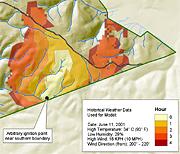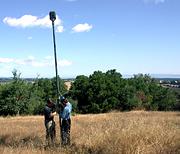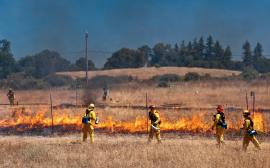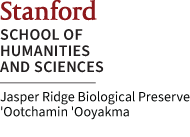Fire Management
Participation in Fire Safe San Mateo County
The goal of fire management at Jasper Ridge Biological Preserve is to reduce fire hazards to neighboring communities and the JRBP community without compromising its research and conservation mission.
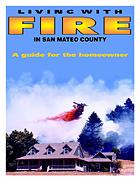 Jasper Ridge Biological Preserve is an active member of Fire Safe San Mateo County, a collective effort of over twenty five agencies including Woodside Fire Protection District and the California Department of Forestry and Fire Protection.
Jasper Ridge Biological Preserve is an active member of Fire Safe San Mateo County, a collective effort of over twenty five agencies including Woodside Fire Protection District and the California Department of Forestry and Fire Protection.
The mission of Fire Safe San Mateo County is to maintain the quality of life and property for the citizens living in the wildland-urban intermix zones of San Mateo County. Working together, we can achieve effective fire protection, education and planning.
The key elements of the Mission are to reduce hazardous vegetation, the creation of defensible space around structures, and the education of citizens regarding fire hazards and fire behavior through the guidance of local agencies.
For more information on Fire Safe San Mateo County go to http://www.firesafesanmateo.org/.
Fire Tours of the Preserve For Local Fire Crews
During summer, the Preserve usually hosts a number of tours for fire crews from Woodside Fire Protection District, SLAC-based Fire Department, and the California Department of Forestry and Fire Protection. This is part of a growing tradition of having fire crews tour the Preserve to become familiar with access and activities. The tours included familiarization with all vehicle gates, bridges, major fire roads, major experiments, facilities, and sensitive areas such as the serpentine grassland.
Prescribed Fires at Jasper Ridge Biological Preserve
The California Department of Forestry and Fire Protection (Cal Fire), in collaboration with Jasper Ridge Biological Preserve, conducted a small, prescribed burn inside the preserve's main entrance on Sand Hill Road on Monday, July 18, 2011. The prescribed burn was confined to just 1.2 acres of grassland and provided a range of benefits for management and research. The area that was burned has been intensively studied for 14 years, providing background information so that the burn can be used to:
- assess the impact of fire retardants on soils and grassland communities for possible deployment for added safety along preserve perimeters.
- test the performance of a remote, stand-alone fire detection system for deployment at the preserve.
- better understand fire dynamics as the environment of California changes in the future.
 Since 1997, the grassland within the burn site has been a part of the Jasper Ridge Global Change Experiment. The prescribed burn will help extend these insights to consider impacts from increased fire frequency and intensity, which are also predicted for California in the future. Scientists from Stanford, the Carnegie Institution for Science, University of California-Berkeley, University of California-Santa Cruz and several other institutions are working together to maximize what can be learned about fire management under present and future conditions.
Since 1997, the grassland within the burn site has been a part of the Jasper Ridge Global Change Experiment. The prescribed burn will help extend these insights to consider impacts from increased fire frequency and intensity, which are also predicted for California in the future. Scientists from Stanford, the Carnegie Institution for Science, University of California-Berkeley, University of California-Santa Cruz and several other institutions are working together to maximize what can be learned about fire management under present and future conditions.
- Goals of prescribed burn
- Photos of the burn by Dan Quinn
- Video stream of burn by Stanford Video: JRGCE-WebstreamPrescribedBurn.mov (available on disc)
- Video of burn by Don Mason: JRGCE-PrescribedBurn.mov (available on disc)
1999 and 2001 controlled burns
Jasper Ridge Biological Preserve conducted grassland controlled burns in 1999 and 2001 in collaboration with local fire personnel.
The following photos are taken from the 2001 burn:
- Creating a black line -- western site on June 1
- Creating a black line -- eastern site on June 3 and 4
- Controlled burn along the eastern site on June 5
- Controlled burn along the western site on June 5
2001 Controlled Burn Location Map

Additional Fire Management Activities
- Trimming of ladder fuels and flail mowing along selected sections of the Preserve perimeter to reduce risk to nearby residents
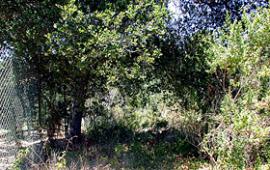
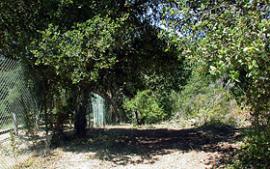
- Continue to integrate fuel management efforts into fire behavior models in order to strategically identify amounts, sizes, and shapes of plots where fuel management might significantly impact the movement of fire through the Preserve.
- Exploit opportunities to bury or eliminate Preserve power lines to reduce potential ignition sources.
- Efforts to reduce response time by testing and exploring remote early warning systems.
